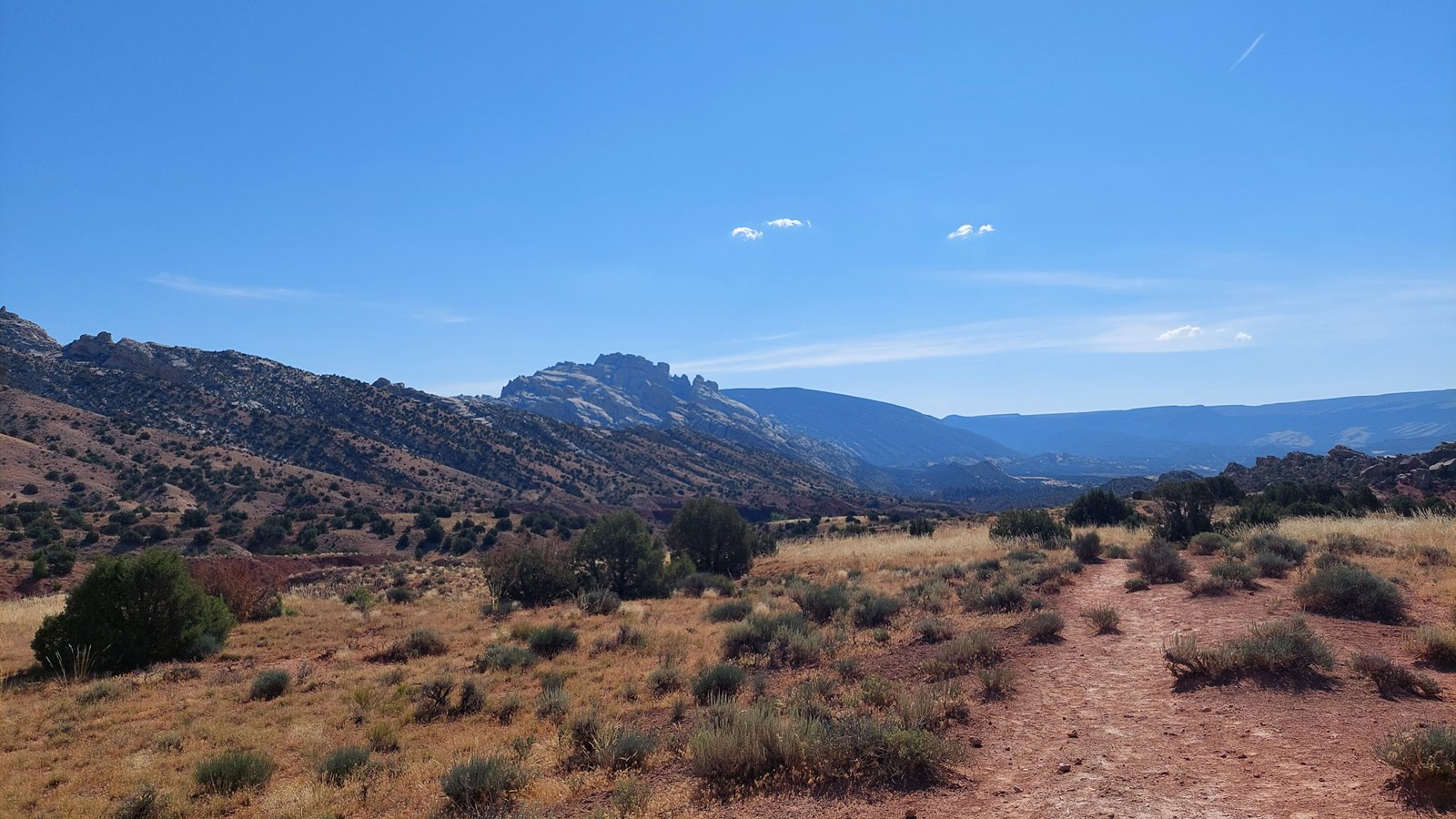Last updated: July 24, 2022
Place
Sound of Silence Trail Stop 10

NPS Photo/Conrad Provan
Quick Facts
Amenities
1 listed
Scenic View/Photo Spot
What is happening beneath our feet to result in such a dramatic landscape at the surface? The noticeable curve of Split Mountain is part of an anticline - an upward fold of rock. While Split Mountain arcs up, other features seem to sag. The sags are called synclines. This underlying rollercoaster of rock formed when formerly flat sedimentary layers were compressed and wrinkled. Forces related to the building of the Rocky and Uinta Mountains 70 - 40 million years ago caused the uplifting, tilting, faulting and folding of the rock layers. While some layers erode into mounds, others stick out as ridges.
Erosion reveals not only a variety of shapes, but also an array of colors. Look back across the Moenkopi Formation labyrinth you just traversed. In the distance you will see a swath of red rock known as “The Racetrack.” The “lanes” are made up of Triassic-aged Moenkopi and Chinle formations, seemingly wrapping around the corner. These rust colored rocks are rich in iron and are sometimes called the Triassic Red Beds. Iron is also responsible for many of the yellow, orange and greenish tints to the rock layers here. Obviously inspired by the colors and shapes from near this ridge, Ernest Untermann brought his paints and easel to this area in the mid-1900s. A German immigrant, he became known as “The Artist of the Uintas,” and Dinosaur’s dramatic landscapes spoke to him. The sedimentary rocks around you were originally flat, horizontal layers when they were deposited. Each layer represents its own story of a different past environment, different fauna and flora, a succession of time and life on our planet. For millions of years, these stories were buried deep underground. Thanks to uplift and erosion, they are once again free to tell colorful tales of change over time.
Erosion reveals not only a variety of shapes, but also an array of colors. Look back across the Moenkopi Formation labyrinth you just traversed. In the distance you will see a swath of red rock known as “The Racetrack.” The “lanes” are made up of Triassic-aged Moenkopi and Chinle formations, seemingly wrapping around the corner. These rust colored rocks are rich in iron and are sometimes called the Triassic Red Beds. Iron is also responsible for many of the yellow, orange and greenish tints to the rock layers here. Obviously inspired by the colors and shapes from near this ridge, Ernest Untermann brought his paints and easel to this area in the mid-1900s. A German immigrant, he became known as “The Artist of the Uintas,” and Dinosaur’s dramatic landscapes spoke to him. The sedimentary rocks around you were originally flat, horizontal layers when they were deposited. Each layer represents its own story of a different past environment, different fauna and flora, a succession of time and life on our planet. For millions of years, these stories were buried deep underground. Thanks to uplift and erosion, they are once again free to tell colorful tales of change over time.
